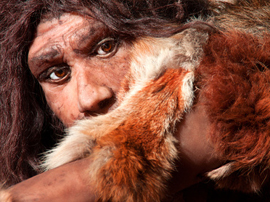Throughout my life I’ve had two great interests: medicine and anthropology. I’ve traveled the world to study ancient and contemporary cultures, and have learned to look at health as a culturally driven feature of human life.
I have also learned that heart disease is a cultural phenomenon that is distinct to the modern Western lifestyle.
Other cultures simply do not suffer from heart disease as much as Americans. This stands as compelling evidence that heart disease is the product of the way we live and eat.
This fact was brought to wide public attention through the 2005 publication of The China Study by T. Colin Campbell and Thomas M. Campbell.
This book reported on the health and nutritional practices among men in 65 rural Chinese counties where the population ate a largely plant-based diet.
The authors found that death rates from heart disease among the sample Chinese population were 17 times lower than American men. And even though the rural Chinese men consumed more calories per kilogram than Americans, their body weight remained 20 percent lower.
The Campbells’ findings on nutrition and diet offer important insights on how we think about health and the Western lifestyle. The present epidemics of heart disease, Type 2 diabetes, and even certain types of cancer are the product of widespread affluence in the post-industrial age.
We are addicted to living on starches, sugars, fatty meats, and salt, and sitting in front of the television as we consume them.
Many people are taking these findings to heart. There’s a whole movement — often called the Caveman Diet or the Stonehenge Diet — that encourages people to eat as ancient man did before agriculture set in and large grain crops started being produced.
Hunter-gatherer societies still exist, of course, at the fringes of civilization. They still live off the fruits of local flora and the root vegetables on the ground. They still catch and kill fish and wild game.
There’s a wealth of evidence that hunter-gatherer societies, both ancient and modern, exhibit remarkably low incidences of heart disease, Type 2 diabetes, arthritis, and dementia. Some have suggested that if we tailor our diet to that of the hunter-gatherer societies, we would find ourselves similarly free of the diseases that plague us.
The ultimate case in point comes from my patients who are 100 years old and older. I have many in my care now, and every single one lives the same way.
My centenarians are active: They garden, write poetry, paint, do chores around the house, and take walks. They live highly regimented lives, waking up at the same time every day, going to bed at the same time each night, and even eat the same foods every day.
They will have an egg, a piece of whole wheat toast, and a piece of fruit for breakfast. At lunch, they’ll eat a small salad and a bowl of soup. At dinner, more vegetables, a starch such as potatoes or rice, and a small portion of meat.
They never overeat and rarely snack. They have disciplined themselves to eat small portions, eating to live rather than living to eat.
That’s the way you live to be 100.

